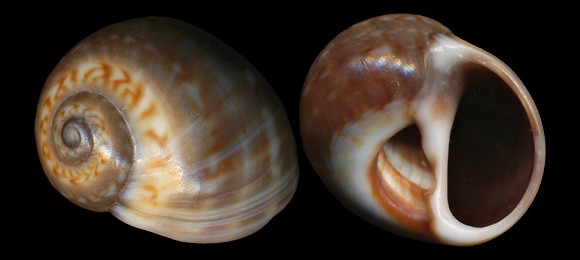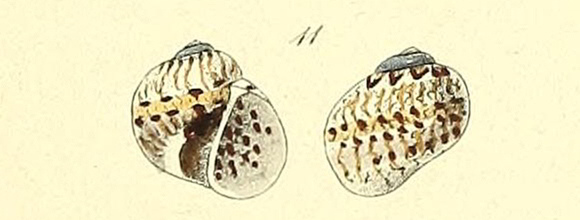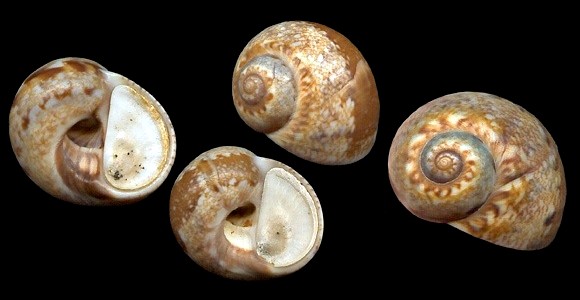
Basionym: Nerita vittata.
Synonyms: carinifera, intricatoides, textilis.
2m deep, in sand, Málaga, Andalucia, S. Spain. 13-14mm.
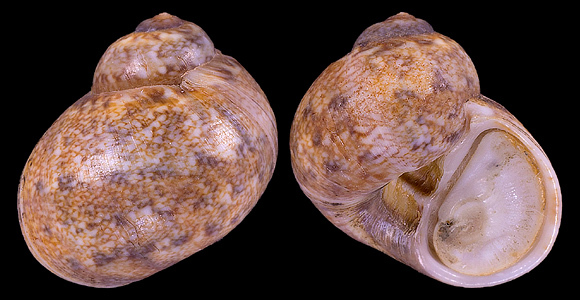
« Shell moderately or widely umbilicate, gloose, solid, opaque, slightly glossy, smooth, lisse, with a thin suture, yellow-whitish in colour, adorned with a very finely and densely reticulate pattern and 4 lines (3 of them equally spaced at the periphery of the last whorl, the other one near the suture) showing an alternance of dark and pale blotches; the base bears a brown area around the white umbilicus; spire globose, apex pointed; whorls 5, the first minute, narrow, convex, the other bulging, rapidly increasing in size, the last one slightly extending; aperture oblique, half-moon shaped, width equal to the ⅘ of the length; inside pale yellow with fine brown band; labrum simple, sharp, whitish inside; columella narrow, weakly calloused adapically; umbilicus with a protruding spiral cord in the middle. » – J. G. Hidalgo: “Description de deux espèces de Natica des mers d’Espagne”, Journal de Conchyliologie t.21, Paris 1873, p. 334 (Natica intricatoides). In fact, the ornamentation is rather variable, and even the spiral bands can disappear, partially or totally. This being said, the marbled or “textile” pattern seems more constantly present, and never appear so densely and markedly in the other mediterranean species. – Málaga Bay, on sand at 2m deep. 17,6mm. Original pictures provided by A. Nappo (IT) – (CC BY-NC-SA).
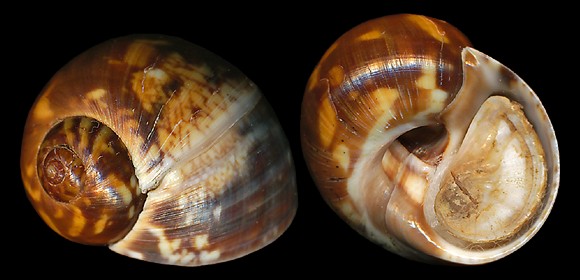
Dredged at 3-4m deep, on dense mud bottom amidst Zostera nolti, Ria Formosa, Algarve, S. Portugal. 14mm.
